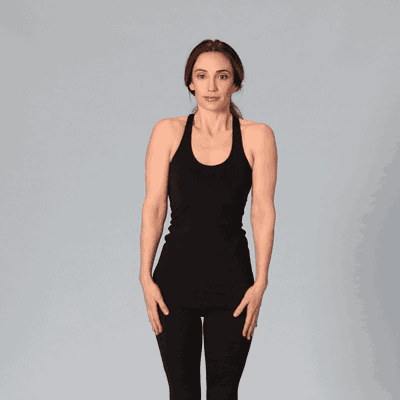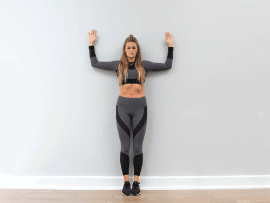Picture waking up in the morning and a sudden, sharp pain shoots in your shoulder. Simple tasks such as combing your hair or reaching for the top shelf become daunting. This is the reality of those living with rheumatoid arthritis in their shoulder. It is a chronic autoimmune condition that can significantly impact the joints. In this blog, we are going to delve into rheumatoid arthritis in the shoulder, and its complications, we will also understand its effects, and discover the strategies that can offer relief for an improved quality of life.
Contents
How Does Rheumatoid Arthritis Affect The Shoulder?
Rheumatoid arthritis (RA) is a relentless autoimmune condition that doesn’t discriminate when it comes to joints. While it’s often associated with the small joints in the hands and feet, the shoulder is not immune to its effects. Understanding the intricate anatomy of shoulder involvement in RA is crucial in comprehending the challenges it presents and the strategies used to combat them.
Shoulder Anatomy Basics:
To appreciate how RA affects the shoulder, let’s start with a basic rundown of shoulder anatomy:
- Bones: The shoulder is primarily composed of three bones—the humerus (upper arm bone), scapula (shoulder blade), and clavicle (collarbone). These bones work together to create the shoulder joint.
- Joints: The shoulder consists of several joints, with the most critical one being the glenohumeral joint. This ball-and-socket joint allows for a wide range of motion but is susceptible to RA-related inflammation.
- Ligaments and Tendons: Ligaments connect bones to bones, providing stability to the shoulder joint. Tendons attach muscles to bones, enabling movement. The rotator cuff, a group of tendons and muscles, is vital for shoulder function.
RA’s Impact on the Shoulder:
When RA infiltrates the shoulder, it often targets the synovium—a membrane lining the joint capsule. The immune system’s misguided attack on the synovium triggers inflammation, causing a cascade of issues:
- Inflammation: In RA, persistent inflammation thickens the synovium, leading to pain, stiffness, and swelling in the shoulder joint.
- Cartilage Damage: Inflammatory chemicals released in RA can erode the cartilage that cushions the joint, resulting in decreased joint space and increased friction.
- Bone Erosion: Over time, the inflammatory process may extend to the bones, causing them to weaken and potentially leading to deformities.
- Muscle Weakness: RA can also affect the muscles around the shoulder joint, contributing to muscle weakness and further impairing function.
Exercises To Ease Shoulder Pain Caused by Rheumatoid Arthritis
Here are some exercises tailored to ease shoulder pain associated with RA:
Pendulum Swing
- Stand or sit with a slight bend in your waist, supporting your unaffected arm on a table or chair for stability.
- Let your affected arm hang down.
- Gently swing your arm in small circles, both clockwise and counterclockwise.
- Perform 10-15 swings in each direction.
Shoulder Rolls
- Stand or sit with your arms relaxed at your sides.
- Slowly roll your shoulders forward in a circular motion.
- After 10-15 seconds, reverse the direction, rolling your shoulders backward.
- Repeat this exercise for 2-3 sets.
Wall Climbing
- Stand facing a wall with your fingertips lightly touching it.
- Slowly walk your fingers up the wall, as high as you can comfortably reach.
- Hold for a few seconds, then walk your fingers back down.
- Perform this exercise for 2-3 sets.
Cane or Towel Stretch
- Hold a cane, broomstick, or towel with both hands, palms facing upward.
- Raise your arms overhead as far as you can without causing pain.
- Hold the stretch for 15-30 seconds.
- Repeat 2-3 times.
Isometric Shoulder Strengthening
- Sit or stand with your back straight.
- Hold your affected arm close to your body with your elbow bent at a 90-degree angle.
- Press your palm into a wall or door frame, holding for 5-10 seconds.
- Repeat this isometric contraction 5-10 times.
Wall Angels
- Stand with your back against a wall, feet shoulder-width apart.
- Bring your arms up to shoulder level, with your elbows bent at 90 degrees.
- Slowly slide your arms upward, extending them as far as you can against the wall.
- Then, lower them back down.
- Perform 10-15 repetitions.
Finger Walk
- Lie on your back with your knees bent.
- Hold a lightweight (e.g., a small water bottle) in your affected hand.
- Imagine you are walking your fingers up a wall with the weight in your hand.
- Repeat this exercise for 10-15 repetitions.
Remember that the key to managing shoulder pain due to RA is consistency and gradual progression. Start with a low number of repetitions and sets, and gradually increase as your shoulder becomes more accustomed to the exercises. If you experience pain or discomfort during any exercise, stop immediately and consult with your healthcare provider or physical therapist.
Treatment Options for Rheumatoid Arthritis in the Shoulder
RA can wreak havoc on the shoulder joint, causing pain, stiffness, and limited mobility. However, with a comprehensive treatment plan, you can regain control and improve your quality of life.
- Medications: Disease-modifying antirheumatic Drugs (DMARDs) are often the first line of defense against RA. They work to slow down the progression of the disease and reduce inflammation. Biologic medications target specific immune system components responsible for RA. They can be highly effective in managing symptoms and slowing joint damage. Nonsteroidal Anti-Inflammatory Drugs (NSAIDs) like ibuprofen help alleviate pain and inflammation. Corticosteroids can provide rapid relief from inflammation and pain. They are often used as short-term solutions.
- Physical Therapy: Physical therapy is a cornerstone of RA management in the shoulder. Skilled physical therapists design exercise programs to strengthen muscles, increase range of motion, and manage pain.
- Assistive Devices and Orthotics: Devices such as braces and supports can help stabilize the shoulder joint and reduce strain. Additionally, custom-made orthotic devices can assist with joint protection and enhance daily functioning.
- Lifestyle Modifications: Lifestyle changes can have a significant impact on RA pain. Adequate rest is essential to manage RA flares. Learn techniques to protect your shoulder joint during daily activities, reducing the risk of strain. Heat packs can ease muscle tension, while cold packs can reduce inflammation and pain.
- Surgical Interventions: In severe cases where other treatments haven’t provided relief, surgical options may be considered. These include Synovectomy (removal of the inflamed synovium lining the joint capsule), joint fusion to stabilize the joint, and in cases of extensive joint damage joint replacement may also be performed.
- Medication Management: Regular monitoring by a rheumatologist is crucial to adjust medications as needed, manage side effects, and ensure the most effective treatment.
Lifestyle Tips For Coping With Shoulder Pain In Rheumatoid Arthritis
Here are some elaborate lifestyle tips to help you cope with this condition:
- Balanced Diet: Maintain a diet rich in anti-inflammatory foods, including fruits, vegetables, whole grains, and fatty fish like salmon. Omega-3 fatty acids found in fish have been known to reduce inflammation. Limit processed foods, sugar, and saturated fats, which can exacerbate inflammation.
- Proper Posture: Pay attention to your posture throughout the day. Ensure your workspace, whether at home or the office, is ergonomically designed to reduce strain on your shoulders and neck. Sit and stand with your shoulders relaxed and your spine aligned.
- Weight Management: Maintaining a healthy weight is crucial, as excess weight places additional stress on your joints, including the shoulders. If needed, work with a healthcare professional or dietitian to create a weight management plan.
- Heat and Cold Therapy: Applying heat or cold packs to your shoulders can provide temporary relief from pain and inflammation. Experiment with both to see which works best for you. Heat can relax muscles, while cold can reduce swelling.
- Stress Management: Stress can exacerbate rheumatoid arthritis symptoms. Incorporate stress-reduction techniques such as meditation, deep breathing exercises, and yoga into your daily routine to help manage stress levels.
- Pacing Yourself: Listen to your body and avoid overexertion. Rest when necessary, and don’t push yourself too hard. Break tasks into smaller, manageable segments to avoid putting undue stress on your shoulders.
- Medication Management: Work closely with your rheumatologist to manage your medication regimen. Ensure you understand your medications, their potential side effects, and any necessary adjustments. Be diligent with taking prescribed medications.
- Regular Check-Ups: Stay on top of your healthcare appointments and check-ups. Regular monitoring allows your healthcare team to track your condition’s progression and make necessary adjustments to your treatment plan.
Conclusion
If you’re experiencing Shoulder pain, physical therapy for shoulder pain at PhysioMantra can help: Book an online physical therapy session.









